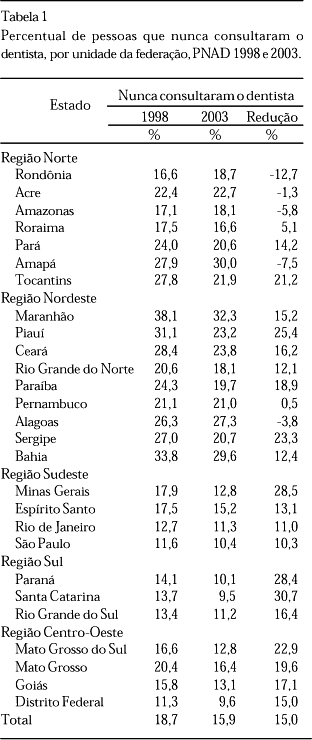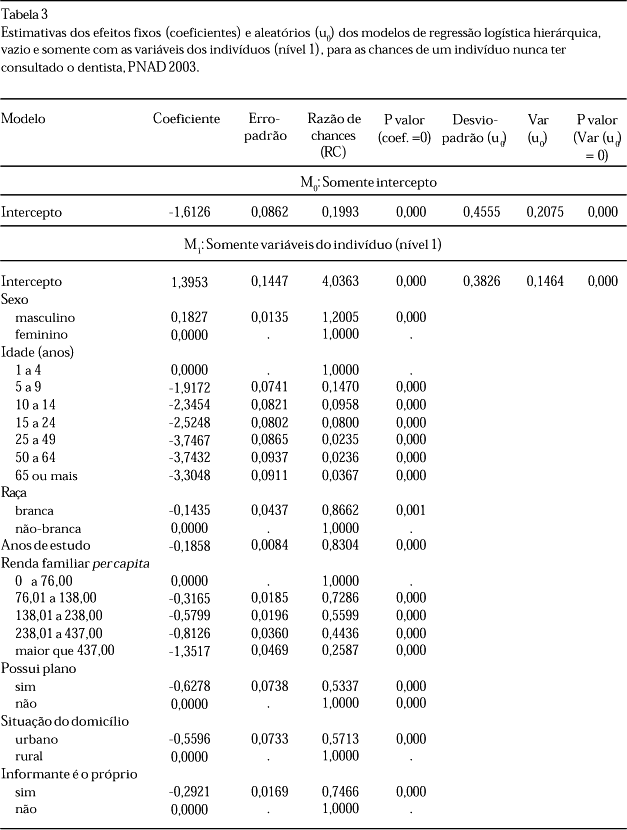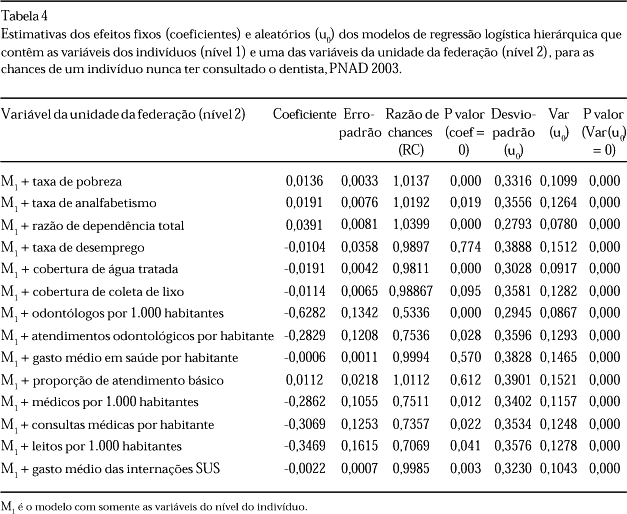The aim of this study is to analyze the relationship between individual and contextual characteristics and use of oral health services in Brazil and to compare the 2003 data with those of 1998. Data from the 2003 National Household Sample Survey were analyzed with regard to the possibility of an individual never having seen a dentist according to individual and State characteristics and using a multilevel logistic model. The possibility was 20% higher for men and for the old-aged in comparison to individuals bewteen 50 and 64 years of age, 3.4% lower for white individuals, 46.6% lower for persons with health insurance, and 42.9% lower for residents of urban areas. The possibilities decreased according to the educational level. Compared to the 20% making up the poorest part of the population, the possibilities of an individual never having had oral health care were 27.1% lower for individuals in the second quintile of the per capita family income and 74.1% lower for the richest 20%. Contextual variables associated to the use of oral health services showed that these services were less used in the poorer states of the federation and in areas with less complex health services, offering less odontological and medical care.
Utilization; Access; Oral health services; Hierarchical models; Context




